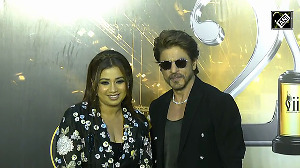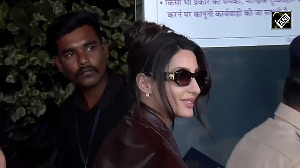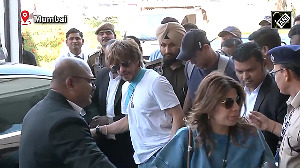 In the five full budgets that Manmohan Singh presented, the country's finances showed only marginal improvement.
In the five full budgets that Manmohan Singh presented, the country's finances showed only marginal improvement.
His first budget in July 1991 was pathbreaking where he did away with industrial licencing, liberalised trade policy and slashed expenditure in the backdrop of a foreign exchange crises forcing a devaluation of the rupee by 16 per cent and again by 6 per cent.
Singh boldly attempted to cut fertiliser subsidies where he encountered stiff political resistance. His axe fell on capital expenditure and on health and education.
But he had to roll back the fertiliser price hike, by restoring the subsidy. While the subsidy bill rose marginally, Singh managed to sharply cut fiscal deficit to 5.9 per cent for the year ended March 1992, largely on account of a 20 per cent rise in revenue receipts.
In the same year, he set up the Raja Chellaiah committee to carry forward the tax reforms he initiated and also the institution of the Narasimhan Committee to revamp the financial system.
The foreign direct investment regime was liberalised and the energy and power sectors were opened up.
The Foreign Investment Promotion Board too was set up to attract long-term capital into the country. For the stock markets, Singh gave legislative backing to the Securities and Exchange Board of India.
Singh had the full backing of his Prime Minister P V Narasimha Rao to set the economy rolling again. Besides cutting expenditure, he also cut excise and customs duties and rationalised direct taxes.
He was systematially executing the job till he realised soon that there were limits beyond which the budget could not be used purely as an instrument of economic policy.
In his second budget, Singh carried forward his reform measures such as liberalising gold imports and also announced partial convertibility of the rupee on the current account.
Three tax rate slabs of 20 per cent (for income up to Rs 50,000), 30 per cent (upto Rs 100,000) and 40 per cent (over Rs 100,000) were introduced. Peak customs duty was cut to a maximum of 110 per cent and advalorem mode for excise adopted.
He also put import of raw materials and capital goods on the OGL with a small negative list. For the capital markets, he freed companies to fix the premium on their public issues.
While there was no significant increase in capital expenditure, the revenue expenditure had started rising with the result that the revenue deficit did not show any improvement in the second year at 2.6 per cent of the GDP.
But the economy had logged a growth rate of 5.1 per cent in 1992-93 with a marginal improvement in fiscal deficit to 5.7 per cent of the GDP.
In the next fiscal (1993-94), Singh set up the R N Malhotra Committee to suggest reforms in the insurance sector and also entrusted NIPFP with the task to prepare a framework for a value-added tax regime.
Peak customs duty was cut to 85 per cent. A host of tax holidays for power producing units, for new industries in several states, for STPI and for electronic hardware parks.
The next two years saw a healthy GDP growth of 7.3 per cent each, but not much progress on the fiscal front. In the five years, between 1991-92 and 1995-96, the fiscal deficit in absolute terms had risen by 66 per cent.
It stood at 5.4 per cent of the GDP for the year ended March 1996. The annual average inflation had for the first time charted the single digit course at 8.09 per cent compared to 10-11 per cent during the last four years.






 © 2025
© 2025